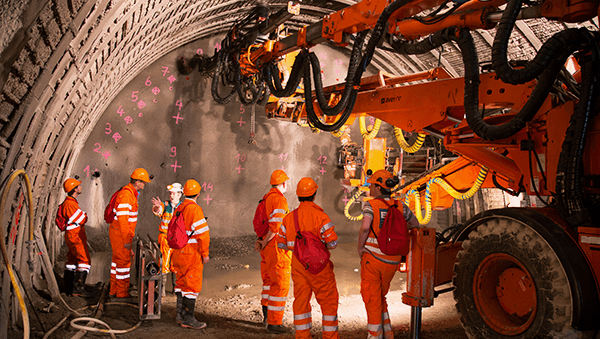Engineering a Formidable Force in the Economic Recovery

Engineering a Formidable Force in the Economic Recovery

The engineering industry continues to be a significant player in the economy, building infrastructures and generating jobs as the country recovers from recent catastrophes like drought, bushfires and the pandemic.
Check the latest projects in different engineering sectors: infrastructure, mining and renewable energy.
Infrastructure and Construction
According to Prime Minister Scott Morrison, infrastructure will generate 66,000 direct and indirect jobs.
He said that these jobs will target a 50 per cent reduction in Commonwealth assessment and approval times for major projects from 3.5 years to 21 months.
He announced a priority list of 15 major projects that are on fast-track for approval, worth more than $72 billion in public and private investment:
This priority list includes:
-
Inland Rail from Melbourne to Brisbane;
-
Marinus Link between Tasmania and Victoria;
-
Olympic Dam extension in South Australia;
-
Emergency town water projects in New South Wales; and
-
Road, rail and iron ore projects in Western Australia.
The priority list encompasses 147 proposals across various sectors: transport, water, energy, telecommunications and social infrastructure.
Infrastructure Australia said that they expect the Infrastructure Priority List will continue to play a significant role in the country’s response post through the COVID-19 recovery. The government’s recent announcement to add $1.5 billion funding to local infrastructure projects, aligns with existing priorities on the list, like the priority programs for regional and rural road network safety improvements.
NSW
In the NSW government’s Covid-19 Recovery Plan, the state was granted $100 billion budget (including a $3 billion accelerator fund) for infrastructure pipeline over four years. The investment will generate 88,000 direct jobs and 0.5 percentage point p.a. contribution to economic growth over the next two years.
The NSW Government’s Planning System Acceleration Program will initiate changes to support investment and jobs during COVID-19 with a Delivery Unit aimed at fast-tracking project approvals.
Under this initiative, new timeframes were established:
-
191 days – decisions for rezoning
-
91 days – decisions for development applications for bigger projects in regional areas
-
20 days – decisions involving major projects of state significance
At present, 49 projects have been approved, which includes the construction of Snowy 2.0 Main Works, improvement of Mt Druitt CBD, redevelopment of Sydney Fish Market and stage 2 construction of Tweed Valley Hospital.
Precinct developments are also prioritized. Precincts serve as major investment hubs from around the world, integrating different sectors like technology, food, agribusiness and defence:
Sydney Tech Central - the NSW Government has committed to facilitating 250,000 square metres of office space in the precinct which stretches several kilometres from Central Station to Camperdown, including South Eveleigh. It will create 25,000 innovation jobs and hold start-ups, scale-ups and innovation partners. Anchor tenant Atlassian will build 4000 local Atlassian research and product development jobs.
Western Sydney Aerotropolis - construction of the Airport will allow for opportunities to improve the connection between suburbs and employment areas. It will generate 200,000 jobs across aerospace and defence, manufacturing, healthcare, freight and logistics, agribusiness, education and research industries. CSIRO plans to create a new state-of-the-art facility, relocating up to 450 researchers and other staff.
Also, $1 billion funding was assigned for five regional Special Activation Precincts in Parkes, Wagga Wagga, Moree, Williamtown and the Snowy Mountains to attract investments and create jobs in regional NSW.
Mining
In an article by the Global Mining Review, the Australian government invested AU $2 billion JobTrainer skills package to help minerals employers in a bid to boost the economy from the COVID-19 pandemic.
The package will train 100,000 extra apprentices and 340,000 school leavers and unemployed people to work in mine sites and minerals supply chain.
The JobTrainer will complement the Minerals Council of Australia-led Mining Skills Organisation Pilot, which aims to deliver vocational education and training needs of the industry and the future minerals workforce. The pilot retrains and reskills workers for deployment in regional and remote Australia and from other industries affected by COVID-19, including new and innovative skills connected to technology practices in the mining sector.
The mining industry has approximately 240,000 operational workforces (2% of Australia total workforce), responsible for the country’s AUS $200 billion in exports.
Renewable Energy
In research commissioned by Clean Energy Council by UTS (University of Technology Sydney), the renewable sector has 26,000 workers, three-fourths of which are doing temporary construction and installation.
Key findings of the report include:
-
Renewable energy will be a major source of jobs in the next few years - approximately creating 20,000 new jobs in the next five years, depending on policy decisions taken now
-
Renewable energy currently employs more people in the domestic coal sector
-
In 2019, at least 25,000 people were employed across renewable energy supply chains and almost 10,000 of those were in rooftop solar
-
Around 75% of renewable energy job opportunities to 2035 could be distributed across regional & rural Australia
-
Skill shortages exist within the renewable energy labour market
Around two thirds could of renewable jobs are created in the regional areas, far higher than coal jobs. Coal mining states NSW and QLD have the biggest share of renewable energy jobs.
The Australian Energy Market Operator (AEMO) identified ‘zones’ for renewable energy where it is expected to be located, which usually overlaps with the coal workforce. In NSW, the Central West zone could create jobs in the Hunter area. In general, many renewable energy jobs are located in other regions and capital cities.